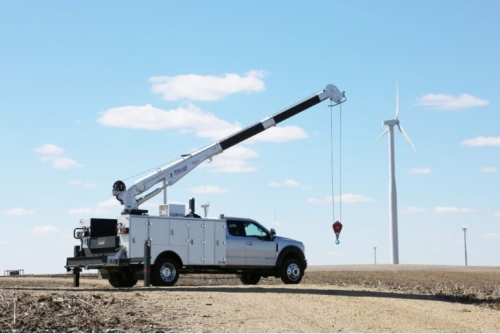The electrical transformer is a widely used element, both industrially and commercially and domestically. Thanks to the transformer, it was possible to improve the conditions for transporting electrical energy over long distances.
As a curious fact, the first electrical transformer was built by the great Michael Faraday, in the year 1831. The elements he used for this were two coils wound, one on top of the other. Over the years, various scientists have carried out experiments with different versions of this first transformer invented by Faraday.
So, what is an electrical transformer?
An electrical transformer is basically a device used to increase or decrease some function of the current (such as voltage or intensity) of an alternating current electrical circuit, maintaining the frequency and power; it can also be used to electrically isolate a circuit. It is composed of two independent windings (windings) in a core of air or electromagnetic material.
How is the electrical transformer composed?
An electrical transformer is structured by different elements, among which we can highlight as main: the core and the windings.
The core of the transformers is made up of silicon steel sheets insulated from each other. They are made up of two main parts: the columns, which is the part where the windings are mounted, and the cylinder heads, which is the part where the union between the columns is made. The core is used to conduct the magnetic flux as it is a great conductor.
The winding consists of a copper wire wound through the core at one end and covered by an insulating layer. It is made up of two coils: the primary and the secondary. The ratio of turns of the copper wire between the primary and secondary windings will indicate the transformation ratio. The name of primary and secondary is somewhat symbolic: by definition, where we apply the input voltage it will be the primary and where we obtain the output voltage it will be the secondary.
How does an electrical transformer work?
To achieve this transformation, it converts the electricity that reaches the input winding into magnetism, to transform it back into electricity, under the desired conditions, in the secondary winding.
This means that, by putting an alternating current in the primary winding, a magnetic flux is created in the core of the transformer, and, therefore, it is also created in the secondary winding. Thus, consequently, a variable voltage is produced in the secondary winding, which can be higher or lower depending on the type of transformer.
ELECTRICAL CURRENT TRANSFORMER
The current transformer is used to measure the current without interrupting the power lines. Therefore, current measurement with the help of current transformers is quite safe.
The electric current transformer can be connected to different devices. Therefore, current clamps with a BNC connector can be connected to an oscilloscope to display the current on the screen. It is also possible to adapt all current transformers to multimeters.
Flexible current transformers are very useful for use in measurement locations that are difficult to access or if the line is too large in diameter for current clamp application. They are especially used on conductor rails or large cable bundles.
Operation of current transformers
The electrical current transformer is designed to maintain a precise relationship between the currents in its primary and secondary circuits in a specific range.
The alternating current in the primary winding produces a time-varying magnetic field in the core, which, in turn, induces an alternating current in the secondary winding.
Thus, the primary circuit is not affected by the connection of the CT. The accuracy of the electric current transformer depends on the coupling that exists between the primary and the secondary; this ensures that the secondary current is proportional to the primary current over a wider current range.
The window type current transformer is also very common, and may have circuit leads passing through the middle of an opening in the core to provide a single turn primary winding. To aid accuracy, the primary conductor must be centered in the opening.
This type of electrical transformer can be manufactured in different shapes and sizes depending on the needs of the end customer.
What is the current transformer used for?
As we have already mentioned, the electrical current transformer is mostly used to measure the current and monitor the operation of the electrical network.
The high voltage current transformer is installed on polymeric or porcelain insulators to isolate them from earth. They can be mounted on the low or high voltage terminals of a potential transformer. Sometimes a section of the bar is removed to install the current transformer.
It is quite common to find several current transformers together. For example, protection and metering devices can use separate current transformers to isolate the metering and protection circuits, and allow current transformers with different characteristics (accuracy class, load capacity) that these devices require.
It must be taken into account that the load connected to the electrical current transformer must not exceed the levels specified by the manufacturer, to prevent the secondary voltage from exceeding the limits of the current transformer for which it was designed. As well as the nominal current of the primary should not be exceeded so that the core does not enter its non-linear region and become saturated.
ELECTRICAL POTENTIAL TRANSFORMER
The potential transformer is a specially wound electrical transformer with a high voltage primary and a low voltage secondary. This type of electrical transformer has a very low power rating and its sole purpose is to supply a sample of power system voltage, to be measured by on-board instruments.
Also, since the main purpose of this transformer is voltage sampling, it must be particularly precise so as not to distort the true values. Potential transformers of various levels of accuracy are available, depending on how accurate their readings need to be for each particular application.
This type of electrical transformer is built for all standard circuit voltages.
Potential transformers behave in a similar way to a conventional electrical transformer with two windings.
How does the potential transformer work?
The typical measurement in electricity is that of voltage. Thus, a volt meter measures voltage, typically within a range of up to hundreds of volts. However, it happens that, in the power industry, the transmission of electricity occurs at thousands and tens of thousands of volts, levels so high that they would destroy almost all common voltmeters. So, the trick is to use a potential transformer.
The potential transformer converts voltages from higher to lower. This way it will take the thousands of volts behind the power transmission systems and drop the voltage down to levels that the meters can handle.
The main characteristic that a potential electrical transformer has over the regular ones is that the transformation of the voltage is constant and linear. This is, for example: the first day of operation 50,000 volts become 50 volts, then on the last day of operation the same thing happens: 50,000 volts become 50 volts. Linearity states that when the voltage drops linearly, then the dropped voltage drops accordingly. The potential transformer makes the measurement of very high voltages much easier.












